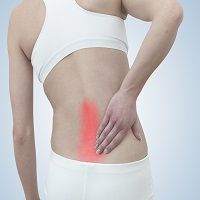Article
Low Back Pain: Patients Want Pain Relief Over Mobility
Author(s):
When it comes to lumbar spinal stenosis, the ultimate goal is to provide both pain relief and improved physical function. But a new study found that if patients could only choose one, they would go with pain relief.

When it comes to lumbar spinal stenosis, the ultimate goal is to provide both pain relief and improved physical function. But a new study found that if patients could only choose one, they would go with pain relief.
Lumbar spinal stenosis is present in 8-11% of Americans and is typically accompanied by low back pain. The crippling condition is expected to reach 2.4 million by 2021, according to the American Academy of Orthopaedic Surgeons. Researchers from the University of Rochester Medical Center (URMC) aimed to uncover the top treatment priority of patients with painful lumbar spinal stenosis in the journal Neurology.
“There has long been a debate in the medical community over striking the right balance between pain relief and physical function,” lead author John Markman, MD, director of the Translational Pain Research Program at URMC, said in a news release.
A total of 269 patients with lumbar spinal stenosis, chronic back pain, and difficulty standing and walking completed the Swiss Spinal Stenosis Questionnaire and standardized treadmill testing. The questions focused on their priorities when it comes to treatment. When asked if they would rather have a treatment that provided pain relief or help them walk further, 79% of the patients would take the pain relieving one regardless of how poor their mobility.
“Even the patients who could not stand long enough to pick up a letter from their mail box or wash the dishes after dinner chose pain relief,” Markman continued. “This study convincingly demonstrates the need to prioritize pain relief because that is what patients want.”
Pain relief in all different specialties continues to be a challenge. Recent studies have found that steroid injections are not effective for long-term back pain and medical marijuana is not as beneficial as previously believed. Therefore, it’s important to not only identify patients’ preferences, but effective ways to achieve them as well.
“While physicians have leaned toward the need to increase mobility, this study shows that patients have a clear preference for pain relief,” Markman confirmed.





